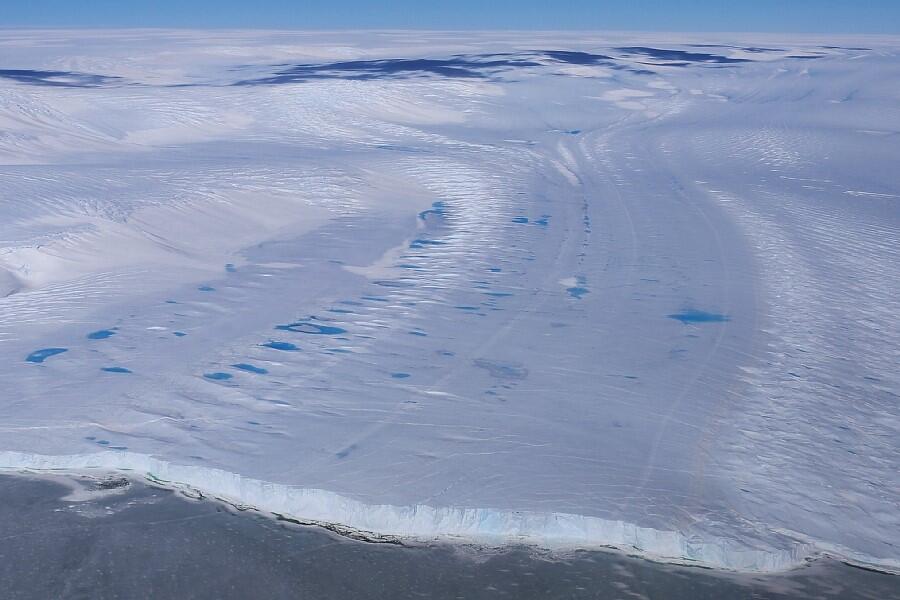The research team of Professor Shin Sugiyama, Associate Professor Shigeru Aoki, graduate student Masahiro Minowa (at the time of research) of Hokkaido University Institute of Low Temperature Science excavated the Langhovde Glacier in Antarctica and directly observed the ocean under the 234-412 m thick ice shelves. They succeeded in clarifying the melting of ice on the bottom of the ice shelf and clarified the underlying mechanism.
In recent years, the Antarctic ice sheet has lost vast quantities of ice and this phenomenon is attracting attention as a global environmental issue leading to a rise in sea levels. Ice shelves (where ice flowing from the Antarctic ice sheet protrudes into the ocean and floats) are formed at the periphery of the ice sheet. The process by which the bottom surface is thawed due to the heat of the sea is assumed to trigger ice sheet fluctuations. This is known as ablation. However, it is difficult to understand the flow of seawater under thick ice shelves. This makes the determination of how much ice is thawed difficult as well.
The research team participated in the 59th Japanese Antarctic Research Expedition and made observations at Langhovde Glacier, 20 km away from Showa Station, in January 2018. A hydrothermal drilling system developed at Hokkaido University was used to excavate ice shelves, and ice shelves with a thickness of several hundred meters were excavated while melting the ice with a hydrothermal jet set at approximately 80 °C. A sensor, capable of measuring water temperature, salt content, flow velocity, and flow direction, was hung with a rope in a borehole with a diameter of approximately 10 cm that penetrated the ice shelf, to assess the marine environment. In addition, an upward-looking video camera placed in a pressure-resistant container was used to photograph the bottom of the ice shelf and the seabed.
As a result of conducting such excavation and observations at a total of four locations, oceanographic data was obtained for almost the entire area of the ice shelf, from the grounding zone (where grounded ice transitions to the freely floating ice shelf) to the boundary of the ice. At the excavation site, an ocean cavity with a depth of 302-12 m was confirmed under the 234-412 m thick ice shelf. By integrating the observations of seawater characteristics obtained at four points, it is clear that warm seawater from the open ocean flows under the ice shelves and melts the ice near the grounding zone. In addition, the temperature of the water adjacent to the ice was 0.7-1.0 °C higher than the freezing point, indicating active melting of ice. In the vicinity of the grounding zone, the melted ice mixed with the seawater, thus reducing its density. This lightened seawater flowed into the open ocean after upwelling along the bottom of the ice shelf. In addition, observation of the bottom of the ice shelf with a video camera revealed characteristic ice irregularities carved by ice melting. Calculations using the measured water temperature, salt content, and flow velocity revealed that the bottom of the ice melts by more than 1 m each year.

Photograph by Shin Sugiyama
This degree of melting is higher than previously reported for the East Antarctic Ice Sheet, at the location of the Langhovde Glacier. Large-scale melting not only occurred in the West Antarctic Ice Sheet, where rapid melting has been reported, but also in the East Antarctic Ice Sheet, which may cause rapid ice sheet fluctuations. Professor Sugiyama stated, "We have been successful in drilling ice shelves and studying the ocean beneath them; next, we are planning to drill and observe the upstream side of the glacier, where the ice rests on land. As glaciers slide over land, more ice melts into the sea and is lost. It is thus of great significance to observe the slip and movement. However, such observations are rarely made in Antarctica. We will leave Japan in November this year and carry out observations at the Langhovde Glacier from December to January."
This article has been translated by JST with permission from The Science News Ltd.(https://sci-news.co.jp/). Unauthorized reproduction of the article and photographs is prohibited.




